Roof sealant is an essential component that plays a critical role in safeguarding your property from the damaging effects of leaks. Acting as a protective barrier, roof sealant prevents water infiltration, thereby shielding your valuable assets from potential harm. By effectively sealing any gaps or vulnerabilities on your roof, this powerful substance acts as a first line of defense against leaks, ensuring the longevity and structural integrity of your building. In this article, we will explore the importance of roof sealant in preventing leaks, shedding light on its benefits and offering valuable insights into the significance of regular maintenance and application.
The Importance of Roof Sealant in Preventing Leaks
When it comes to protecting your home or commercial building, a properly sealed roof is essential. Roof sealant plays a vital role in preventing leaks and ensuring the integrity of your roof. Understanding the importance of roof sealant and how it works can help you make informed decisions to protect your property.
Understanding the Role of Roof Sealant
Roof sealant, also known as roof coating or roof membrane, is a protective substance applied to the surface of a roof to prevent water from seeping through cracks and gaps. It acts as a barrier, effectively sealing the roof and protecting it from leaks caused by various factors.
Factors Contributing to Roof Leaks
Before delving into the importance of roof sealant, it’s crucial to understand the factors that can lead to roof leaks. Several common issues contribute to the development of leaks, including:
Age and Wear of the Roof
Over time, roofs wear down due to exposure to the elements. The constant exposure to sunlight, rain, wind, and other weather conditions can deteriorate the roof surface, making it more susceptible to leaks.
Weather Conditions
Extreme weather events such as heavy rain, hailstorms, snowstorms, and hurricanes can cause damage to the roof, leading to leaks. The constant battering of these elements weakens the roof’s structure and compromises its ability to keep water out.
Improper Roof Installation
If a roof is not installed correctly, it can develop weak spots and areas prone to leaks. Poorly sealed joints, improper flashing installation, and inadequate insulation can all contribute to water infiltration.
Cracked Flashing and Shingles
Flashing, which is typically made of metal, is installed to prevent water from entering vulnerable areas, such as roof edges, chimneys, and vents. If the flashing becomes damaged or cracked, it can allow water to seep into the roof and cause leaks. Shingles can also crack or become loose over time, creating openings for water to penetrate.
Clogged Gutters and Downspouts
Proper drainage is essential for a leak-free roof. When gutters and downspouts become clogged with debris such as leaves, twigs, and dirt, water can accumulate on the roof instead of being directed away. This pooling of water can lead to leaks and structural damage.
Condensation and Moisture Buildup
Excessive moisture in the attic or trapped beneath the roof can lead to leaks and damage. Condensation can occur due to poor ventilation, inadequate insulation, or leaks in the HVAC system. Moisture buildup can weaken the roof structure, leading to deterioration and leaks.
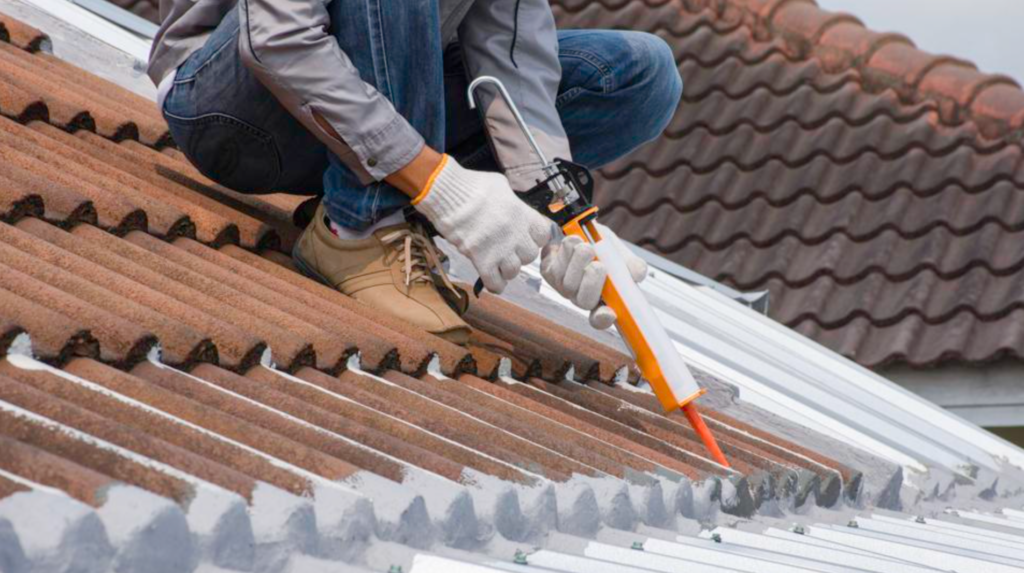
This image is property of thumbor.forbes.com.
How Roof Sealant Works
Roof sealant works by creating a protective barrier that prevents water from infiltrating the roof. It functions as a waterproofing agent, sealing cracks and gaps to keep water out. Here’s how it works:
Sealing Cracks and Gaps
Roofs naturally develop cracks and gaps over time due to weathering and other factors. Roof sealant fills these openings, preventing water from entering and causing leaks. By sealing cracks and gaps, roof sealant reinforces the roof’s integrity and protects against water damage.
Waterproofing the Roof
Roof sealant forms a waterproof layer on the roof surface, acting as a shield against rain, snow, and other forms of precipitation. It prevents moisture from penetrating the roof, eliminating the risk of leaks and water damage.
Enhancing Durability and Lifespan
Applying roof sealant can extend the lifespan of a roof by protecting it from the elements. The sealant acts as a barrier that shields the roof from harmful UV rays, temperature fluctuations, and physical damage. By enhancing the roof’s durability, sealant helps prevent leaks and costly repairs.
Preventing Mold and Mildew Growth
Excess moisture in a roof can create an ideal environment for mold and mildew to grow. Roof sealant inhibits the growth of these harmful fungi by preventing water from entering and accumulating within the roof. It helps maintain a healthy indoor environment and protects against respiratory issues caused by mold and mildew exposure.
Benefits of Using Roof Sealant
Now that we understand how roof sealant works, let’s explore the benefits it offers:
Leak Prevention
The primary benefit of roof sealant is its ability to prevent leaks. By filling cracks and gaps and creating a waterproof barrier, sealant acts as a reliable defense against water infiltration. This prevents costly water damage to the interior of the building and eliminates the need for frequent repairs.
Energy Efficiency
Roof sealant can improve energy efficiency by reducing heat transfer and minimizing air leakage. When applied correctly, it helps insulate the building, keeping it cooler in the summer and warmer in the winter. This reduces the reliance on heating and cooling systems, leading to energy savings and lower utility bills.
Cost Savings
Investing in roof sealant can save you money in the long run. By preventing leaks and the subsequent water damage, you avoid costly repairs and potential structural issues. Additionally, the improved energy efficiency provided by sealant can result in lower energy bills, further reducing your overall expenses.
Enhanced Structural Integrity
Roof sealant reinforces the roof’s structure and enhances its overall integrity. It protects against deterioration caused by exposure to the elements, prolonging the lifespan of the roof. Sealant also helps maintain the structural integrity of the entire building, preventing potential damage to walls, ceilings, and other surfaces.
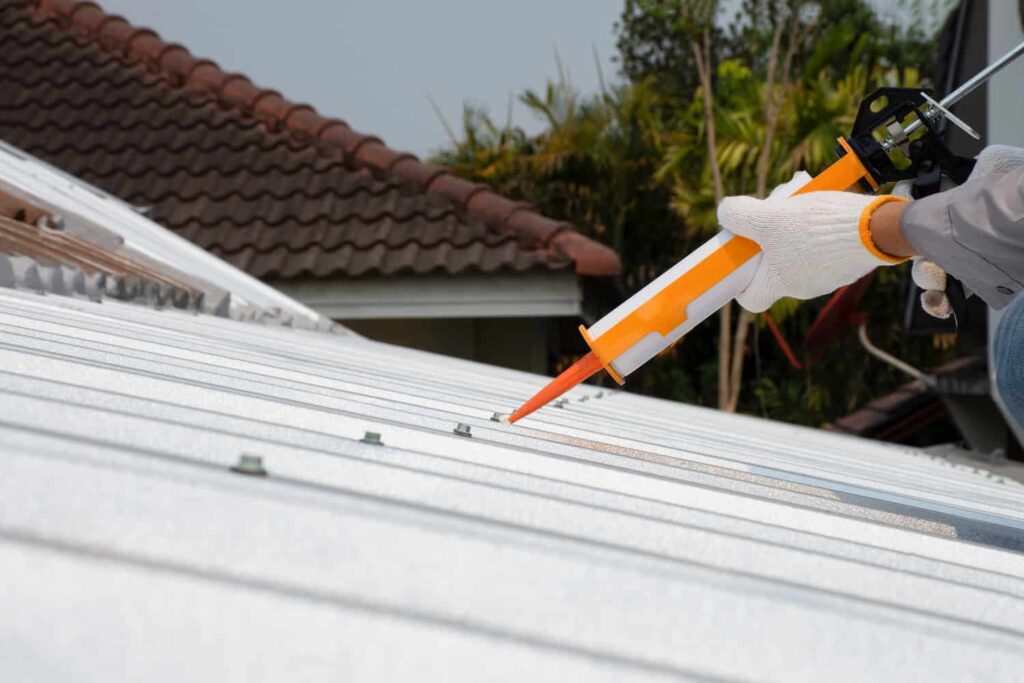
This image is property of www.gougequalityroofing.com.
Different Types of Roof Sealants
Several types of roof sealants are available, each with its own characteristics and applications. Understanding the different options can help you choose the right sealant for your specific needs:
Silicone Sealants
Silicone sealants are known for their exceptional durability and flexibility. They can withstand extreme temperatures, UV exposure, and other environmental factors without cracking or degrading. Silicone sealants are ideal for flat roofs and can be applied to various materials, including metal, concrete, and asphalt.
Acrylic Sealants
Acrylic sealants are water-based and offer excellent adhesion to different roof surfaces. They are easy to apply and are generally more affordable than other options. Acrylic sealants can be used on various roof types, including asphalt shingles, metal roofs, and concrete tiles.
Polyurethane Sealants
Polyurethane sealants are highly versatile and resistant to extreme weather conditions. They have excellent adhesion properties and can be applied to a wide range of roof materials. Polyurethane sealants are particularly suitable for roofs with high foot traffic or areas prone to expansion and contraction.
Bitumen Sealants
Bitumen sealants, often referred to as asphalt sealants, are commonly used for low-slope roofs. They provide effective waterproofing and have good weather resistance. Bitumen sealants are typically applied in hot liquid form and are ideal for roofs with asphalt or modified bitumen membranes.
Butyl Sealants
Butyl sealants are known for their strong adhesive properties and resistance to UV rays. They have excellent elongation, allowing them to accommodate the expansion and contraction of roof materials. Butyl sealants are commonly used for metal roofs and are suitable for both sealing and flashing applications.
Choosing the Right Roof Sealant
Selecting the appropriate roof sealant is crucial to ensure optimal performance and long-lasting results. Consider the following factors when choosing a sealant for your roof:
Considering Roof Type and Material
Different roof types require specific sealants to ensure compatibility and proper adhesion. Whether you have a flat roof, sloped roof, metal roof, or shingle roof, it’s essential to choose a sealant that is suitable for the specific materials and design of your roof.
Climate and Environmental Factors
The climate and environmental conditions in your area should influence your choice of roof sealant. If you live in an area with high sun exposure, extreme temperatures, or heavy rainfall, you’ll need a sealant that can withstand these conditions. Consider the sealant’s UV resistance, temperature range, and resistance to precipitation when making your selection.
UV Resistance
UV resistance is particularly important for roof sealants as they are exposed to direct sunlight. Over time, prolonged exposure to UV rays can cause sealants to degrade and lose their effectiveness. Choosing a sealant with high UV resistance ensures that it will maintain its protective properties for an extended period.
Flexibility and Adhesion
Roofs expand and contract due to temperature changes, and they can shift slightly over time. A flexible sealant with good adhesion properties will accommodate these movements and maintain a secure, waterproof seal. Look for a sealant that can flex without cracking or losing adhesion over time.
Longevity
Consider the expected lifespan of the sealant when selecting a product. Some sealants may require re-application every few years, while others can last for a decade or more. Choosing a long-lasting sealant will save you time and money in the long run.
Manufacturer’s Reputation and Warranty
Always consider the reputation of the sealant manufacturer and check if they offer a warranty. A reputable manufacturer will stand behind their product and provide assurance of its quality and performance. Look for warranties that cover both material defects and workmanship.
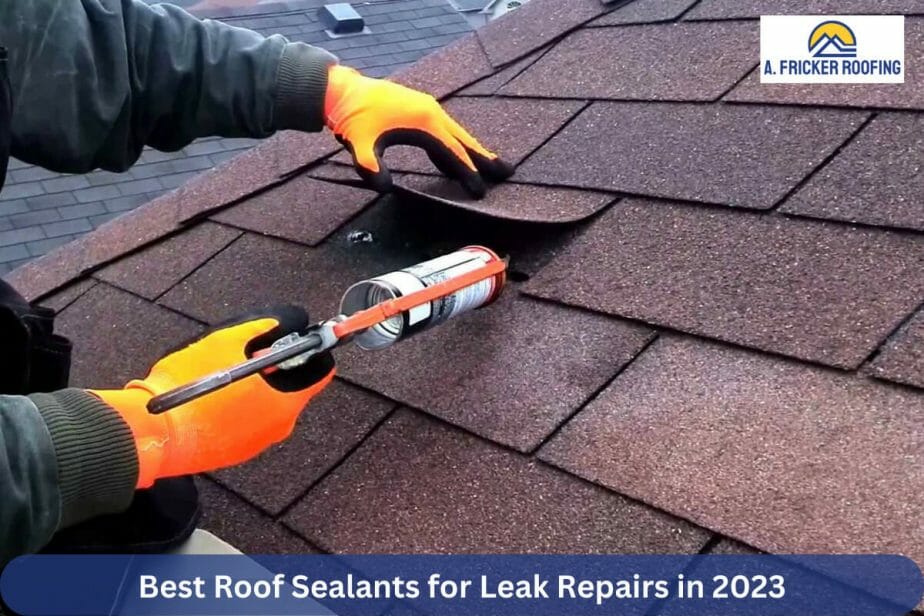
This image is property of efyau7c54ub.exactdn.com.
Preparing the Roof Surface for Sealant Application
Proper preparation of the roof surface is crucial to ensure the effectiveness and longevity of the sealant. Follow these steps to prepare your roof for sealant application:
Cleaning and Removing Debris
Thoroughly clean the roof surface, removing any dirt, debris, and loose particles. The surface must be clean and dry for the sealant to adhere properly. Use a broom, brush, or power washer to remove any accumulated dirt or grime.
Repairing Damaged Areas
Inspect the roof for any damaged areas such as cracks, missing shingles, or degraded flashing. Repair these issues before applying the sealant to ensure a watertight seal. Replace damaged shingles, repair cracked flashing, and fix any other structural or surface damage.
Ensuring Proper Ventilation
Proper ventilation is essential to prevent moisture buildup and condensation beneath the roof. Ensure that vents and exhaust fans are functioning correctly and that there is adequate airflow within the roofing system. Address any ventilation issues before applying the sealant.
Priming the Roof Surface
Some sealants require the use of a primer to ensure proper adhesion. Check the manufacturer’s instructions to determine if your chosen sealant requires a primer. If so, apply the primer according to the manufacturer’s recommendations before applying the sealant.
Applying Roof Sealant Correctly
Proper application of roof sealant is essential to achieve a watertight seal and ensure its effectiveness. Follow these guidelines when applying sealant to your roof:
Using Appropriate Tools and Equipment
Ensure that you have the necessary tools and equipment for the job, including brushes, rollers, sprayers, and safety gear. Choose tools that are suitable for the type of sealant you are using and the application method recommended by the manufacturer.
Ensuring Proper Weather Conditions
The weather conditions during sealant application can impact its performance. Ideally, apply sealant on a dry day with mild temperatures and low humidity. Avoid applying sealant in extreme temperatures or when rain is imminent, as it may prevent proper drying and adhesion.
Following Sealing Guidelines
Carefully follow the manufacturer’s guidelines for the specific sealant you are using. These guidelines will outline the recommended application thickness, coverage rates, and drying time. Adhering to the instructions will ensure that the sealant performs as intended.
Applying Multiple Coats if Necessary
In some cases, applying multiple coats of sealant may be necessary to achieve the desired level of protection. If the roof surface requires additional sealing, apply subsequent coats according to the manufacturer’s instructions. Ensure that each coat is thoroughly dry before applying the next.
Allowing Sufficient Drying Time
Proper drying time is crucial for the sealant to cure and form a solid, waterproof barrier. Follow the manufacturer’s recommendations for drying time before subjecting the roof to foot traffic or exposure to water. Prematurely subjecting the sealant to moisture can compromise its effectiveness.
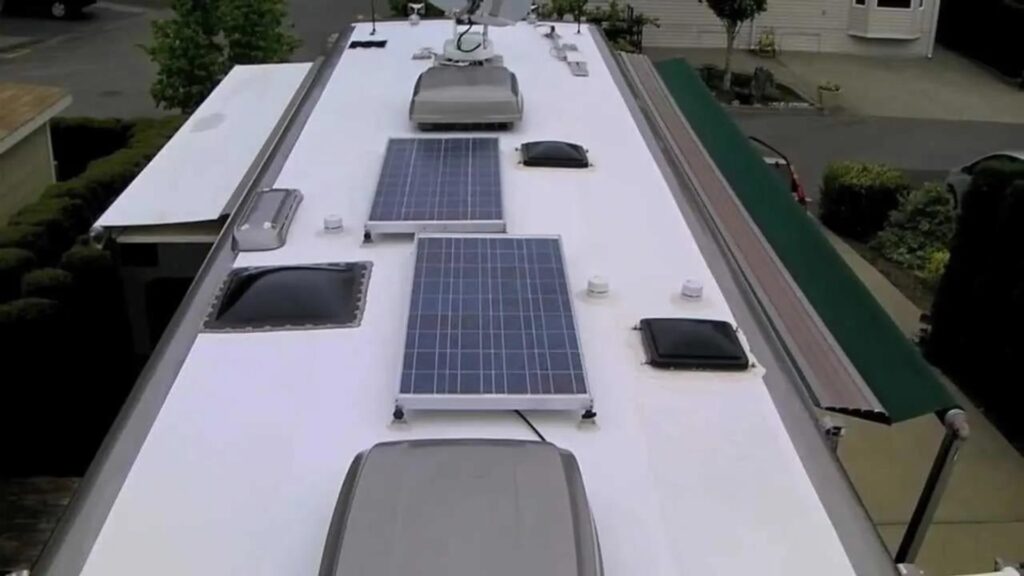
This image is property of www.thervgeeks.com.
Regular Maintenance and Inspection
Although roof sealant provides long-lasting protection, regular maintenance and inspection are still necessary to ensure its ongoing performance. Schedule regular inspections to identify any signs of sealant failure or roof damage. Address any issues promptly to prevent leaks and costly repairs.
Signs of Roof Sealant Failure
To maintain a leak-free roof, it’s essential to be aware of the signs of sealant failure. Watch out for these indicators that your roof sealant may need attention:
Water Stains on Ceilings
If you notice water stains on your ceilings or walls, it may indicate that the roof sealant is no longer effective. These stains can be a telltale sign of water infiltration and leaks. Inspect the roof for signs of sealant degradation or damage.
Dripping or Leaking Water
Obvious signs of dripping or leaking water within your building should not be taken lightly. This signifies a severe roof issue that requires immediate attention. Determine the source of the leak and inspect the sealant for signs of failure.
Mold or Mildew Growth
The presence of mold or mildew within your building can indicate roof sealant failure. Mold and mildew thrive in moist environments, and if water is penetrating through the roof, it can create the ideal conditions for their growth. Inspect the roof for any areas of sealant damage and address the issue promptly.
Peeling or Cracking Sealant
Inspect the sealant regularly for signs of peeling, cracking, or flaking. These visible signs of degradation indicate that the sealant is no longer providing adequate protection. Peeling or cracking sealant should be repaired or replaced to prevent leaks and further damage.
Increased Energy Costs
If you notice a sudden increase in your energy bills, it could be a result of a compromised roof sealant. The sealant’s ability to insulate the building and prevent air leakage may have diminished, leading to increased energy consumption. Inspect the roof and sealant for any issues that may be contributing to energy loss.
Damaged or Loose Shingles
Damaged or loose shingles can compromise the effectiveness of the roof sealant. Shingles that are cracked, broken, or missing allow water to penetrate the roof and bypass the sealant. Inspect the shingles regularly and address any issues promptly to maintain a watertight seal.
In conclusion, roof sealant plays a crucial role in preventing leaks and protecting the integrity of your roof. By understanding the factors contributing to roof leaks, how roof sealant works, and the benefits it offers, you can make informed decisions to keep your property safe and secure. Choosing the right sealant, preparing the roof surface correctly, and applying the sealant appropriately are essential steps to ensure its effectiveness. Regular maintenance and inspections, along with prompt attention to signs of sealant failure, are necessary to avoid costly repairs and maintain a leak-free roof. By prioritizing roof sealant and its maintenance, you can protect your investment and enjoy a safe, dry, and comfortable living or working environment for years to come.
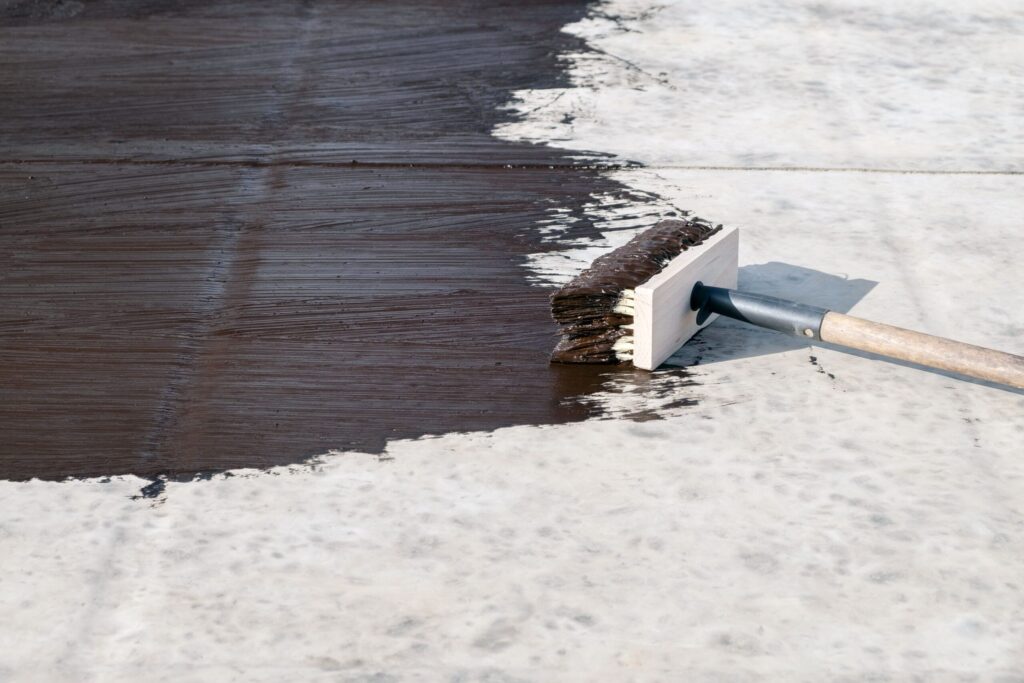
This image is property of s42814.pcdn.co.
